Vietnam was the first country I visited in Asia, back in 2015, and it was that trip which made me start to fall in love with travel. It’s been surpassed in my estimation now, but for some time it was my favourite country in the world. I decided to visit Vietnam again while backpacking around Asia to see some things I had missed the first time and to revisit some favourites from my first trip. This itinerary through Vietnam is a mixture of both my trips.
Itinerary Overview
This route starts in Hanoi in the north and ends in Ho Chi Minh City in the south. Vietnam is long and narrow, so most visitors who backpack the country either start in Hanoi and finish in Ho Chi Minh City, or do the opposite journey from south to north. If you’re starting in Ho Chi Minh City, this itinerary can easily be done in reverse. Alternatively, if you’re on a shorter trip, you could end it around Da Nang in central Vietnam and miss either the north or the south (and come back another time for that!).
This is purely based on a visit for leisure – I would struggle to do this itinerary in a month as I work remotely while travelling and need time for that. I have included a section on working remotely in Vietnam towards the bottom of this post which covers the locations on this route.

The itinerary is also based on long distance journey’s within Vietnam being done either by overnight sleeper bus or train. They aren’t the most comfortable but you should get some sleep, unless you’re like me and barely ever sleep while in transit. I did ok on the train, but struggled to get any sleep on the buses and needed a nap a few times in the morning after arriving at the next place – hostels/hotels in Vietnam are usually pretty good at allowing early check ins.
Vietnam is an amazing country and has more to offer than you can see in a month. There are places (not in this itinerary), like Ha Giang and the Mekong Delta, which I want to visit but haven’t made it to yet – both are on my list for the next trip to Vietnam, whenever that may be! In total, this itinerary is for 28 nights. If you are getting a 30 day e-visa (see the visa section towards the bottom of this post) then the maximum stay is 29 nights, since the day of departure counts as the 30th day. You could spend longer (or less time) in any of the places I have included, but this itinerary allows you to see many highlights and enjoy a variety of experiences across Vietnam.
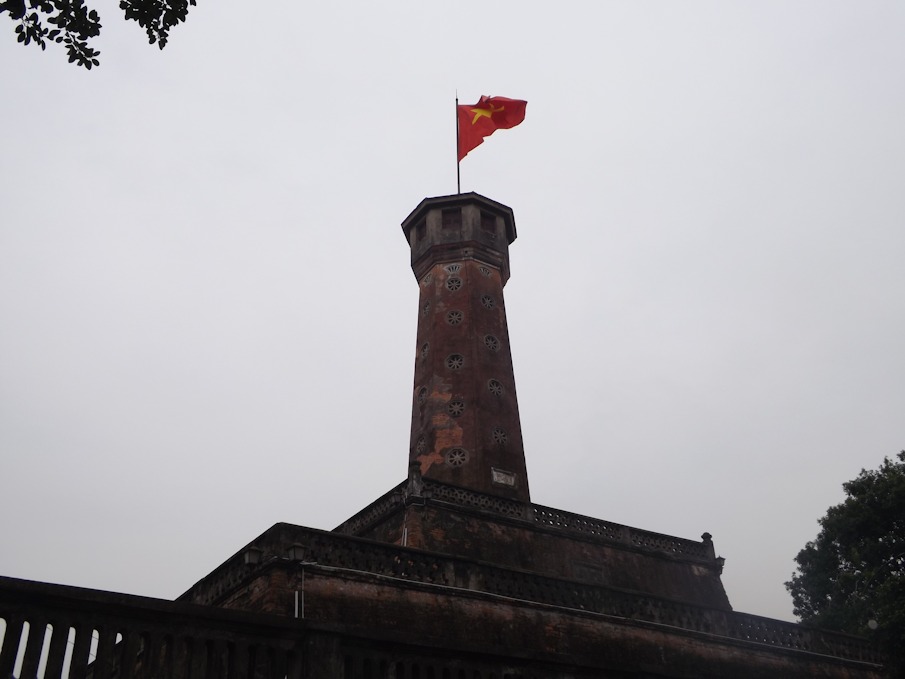
Getting Around Vietnam
Sleeper Bus – Probably the most popular method for backpackers to get around Vietnam, sleeper buses can take you to many locations around the country. Despite the name, they aren’t just for long distance overnight trips – you can catch them for relatively short journeys in the morning or afternoon. Wherever you are in Vietnam, most accommodation and travel agents will be able to sell tickets to you and, if needed, arrange a pickup to get you to the bus stop. I’d suggest doing a little research on prices and the bus operator before booking each trip.
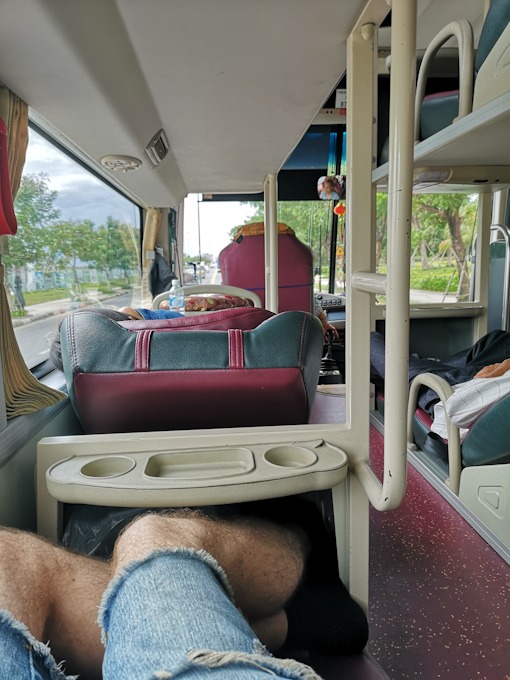
Train – The train network in Vietnam isn’t comprehensive, but it’s an option for some routes. Generally speaking, trains can take you between the cities but they won’t get you directly to smaller places.
Plane – Vietnam has a number of international and domestic airports. The main international airports are Hanoi (north), Da Nang (central) and Ho Chi Minh City (south).
Motorbike – Renting or buying (then selling at the end of the trip) a motorbike to travel through Vietnam is popular and, according to people I’ve met that have done it, an amazing experience. I can’t help with details here but, knowing Vietnamese traffic, I wouldn’t recommend doing this unless you are an experienced motorbike driver. For a detailed guide on travelling through Vietnam by motorbike, this is an informative read. As an alternative to driving yourself, you can hire a motorbike driver to take you from one place to another.
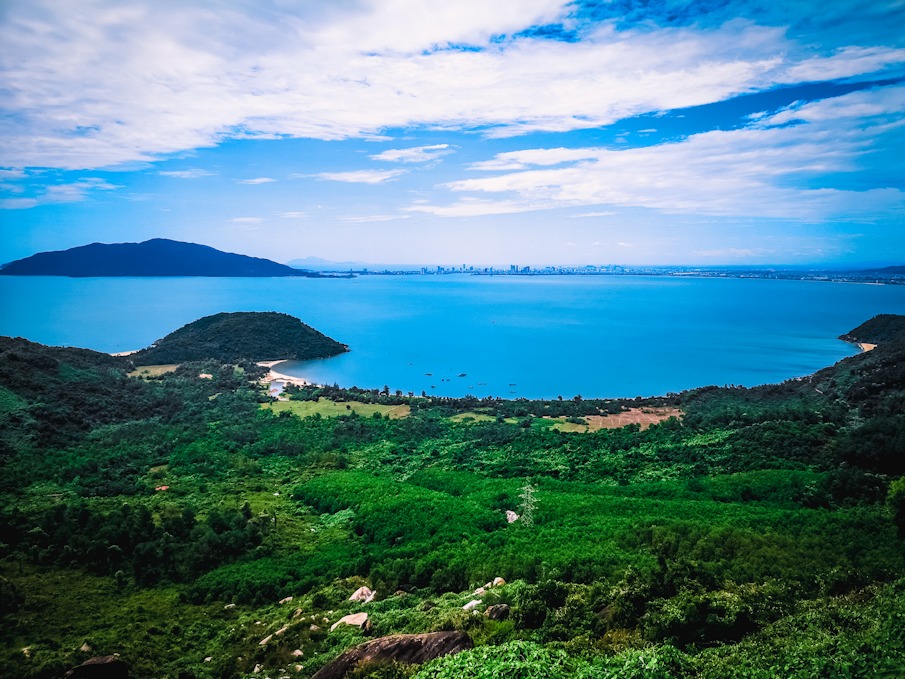
Private car and driver – Not the cheapest option, but a comfortable and convenient way of getting around. A private car and driver can easily be arranged at many travel agents around Vietnam.
The Itinerary
Hanoi (three nights)
The capital city and main starting point for travellers going from north to south through Vietnam. Spend the first night relaxing after arriving and the next couple of days enjoying Hanoi. Some of the highlights are:
- Hoan Kiem Lake and Ngoc Son Temple – a peaceful lake just moments away from crazy traffic, it’s nice to have a walk around here. Ngoc Son Temple is on an islet in the lake, accessible from the north east side of the lake.
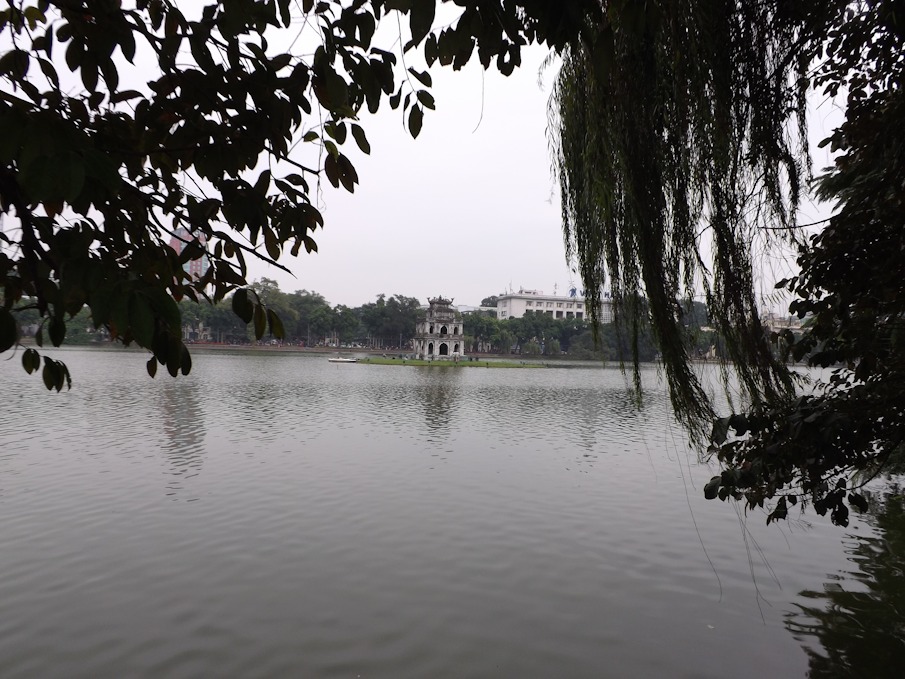
- Try Vietnamese egg coffee – originating in Hanoi, this is available at many cafes around the city and Vietnam. In fact, the sheer range of coffee on offer in Vietnam is incredible. In addition to egg coffee and more conventional choices, Vietnam is also well known for yoghurt coffee, coconut coffee and condensed milk coffee. I’d suggest trying Café Pho Co, which is near Hoan Kiem Lake and offers a view of the lake from its top floor. The café is easy to miss as you have to walk through a shop to get there. The location is correct on Google Maps, just walk through the shop at 11 Hang Gai and you’ll arrive.

- Temple of Literature – one many temples in Hanoi. Dating back to 1070, this was originally a university, hence the name.
- Imperial Citadel of Thang Long – a UNESCO World Heritage Site, this isn’t as impressive as the Imperial Citadel of Hue in central Vietnam, but it’s certainly worth a visit.
- Vietnamese Women’s Museum – an interesting and, in parts, sobering museum which focuses on the role and contribution of Vietnamese women throughout history. The exhibits that stood out to me were those covering their role during wars and another detailing the everyday struggles that many hardworking Vietnamese women still face today.
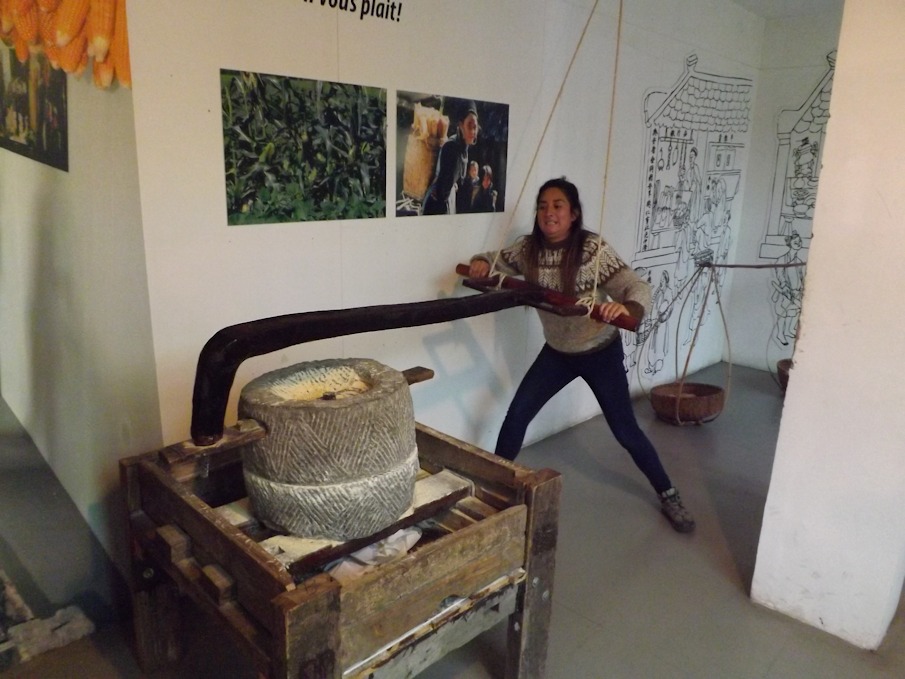
- Ho Chi Minh’s Mausoleum – a controversial figure, ‘Uncle Ho’ is considered to be the founder of modern Vietnam. Ho Chi Minh was the leader of the Vietnamese independence movement which led to Vietnam gaining independence from France, although this also resulted in Vietnam being split into two countries (North and South) and the Vietnam War. Ho Chi Minh died before the Vietnam War ended and reunification occurred. His embalmed remains lie inside a glass case at this mausoleum.

- Explore the Old Quarter – whether you want to go shopping, try food in local eateries or take a seat in one of the tiny plastic chairs at the bars for some beer, there are many ways to pass the time in this traditional part of Hanoi.
- Thang Long Water Puppet Theatre – watch a traditional water puppet show at this well-known theatre.
- Train Street – a train track in the middle of a narrow residential street, trains come down here, just metres away from people’s homes. I first came passed here without knowing about it in 2015 and it stood out as being unusual, but it wasn’t famous then. Fast forward a few years, some residents had set up cafes by the tracks and an Instagram phenomenon was born. This got out of hand and, in October 2019, authorities ordered the cafes to close and blocked access to non-residents. This was all after my last visit to Vietnam but I understand some cafes have reopened and it’s still possible to visit the street, but you will need to invited by one of the café owners. Knowing Vietnam, I’m sure there are café staff waiting near the barriers for that tourist money.
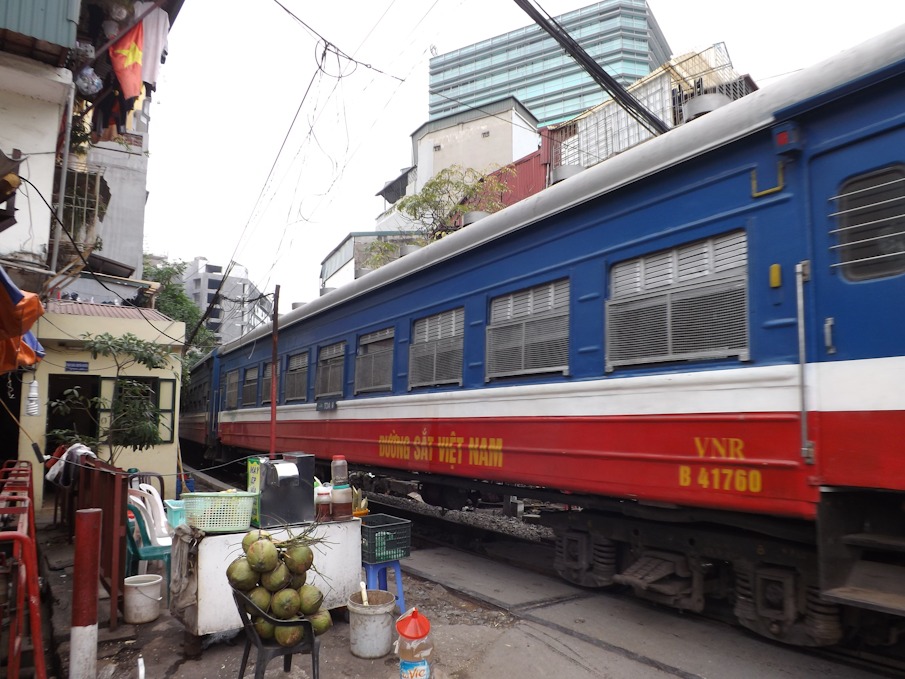
Getting here: There are buses that go from Noi Bai International Airport into the city (should take 1 to 1-1.5 hours) and finish around 10-11pm at night, depending on the bus line. As you would expect, taxis are more expensive but they are faster, more convenient and run 24 hours a day.
Sapa (three nights)
Sapa was one of the places I missed when first visiting Vietnam and I made sure to include it for the second trip. Unfortunately, I started feeling ill on the bus ride there and spent my time in Sapa bedridden. Because of this, I saw nothing except Sapa Town, which is a lovely place if you enjoy getting hassled constantly by people who treat you like a walking cashpoint. Trekking through rice fields and local villages is the main draw in Sapa, something which I was in no condition to do. Whenever I next go to Vietnam, I’ll be sure to visit Sapa again… And hopefully enjoy it this time!
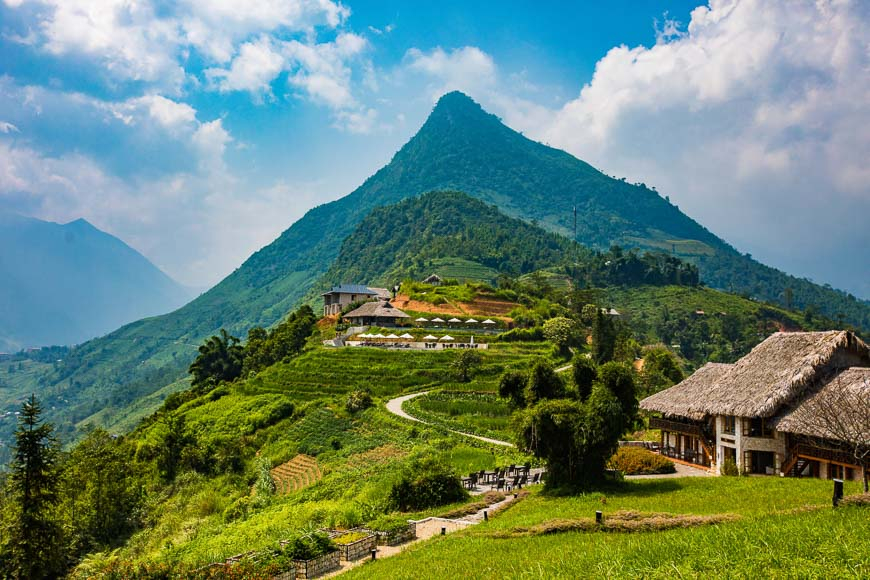
Getting here: From Hanoi, it takes around 6 hours by sleeper bus to get to Sapa Town. Alternatively, you can take the scenic route by train (7.5 hours) to Lao Cai City, then a public bus (every 30 minutes) which runs from 8am to 6pm and takes another 1 hour 20 minutes.
Ha Long Bay (two nights)
Comprising of thousands of limestone karsts, this UNESCO World Heritage is one of the biggest attractions in all of Vietnam. I visited Ha Long Bay from Hanoi and booked a tour through our hostel, which offered three packages for 1-2 nights each – a cheap party boat, a mid-priced option (not a party boat) or a more luxurious option. We were uncertain what the tour would be like so decided to go with the mid-priced option for one night. As it turned out, the boat was fine, we got on well with the other passengers and spending time out in Ha Long Bay was nice and relaxing – we all wished we had booked for two nights!
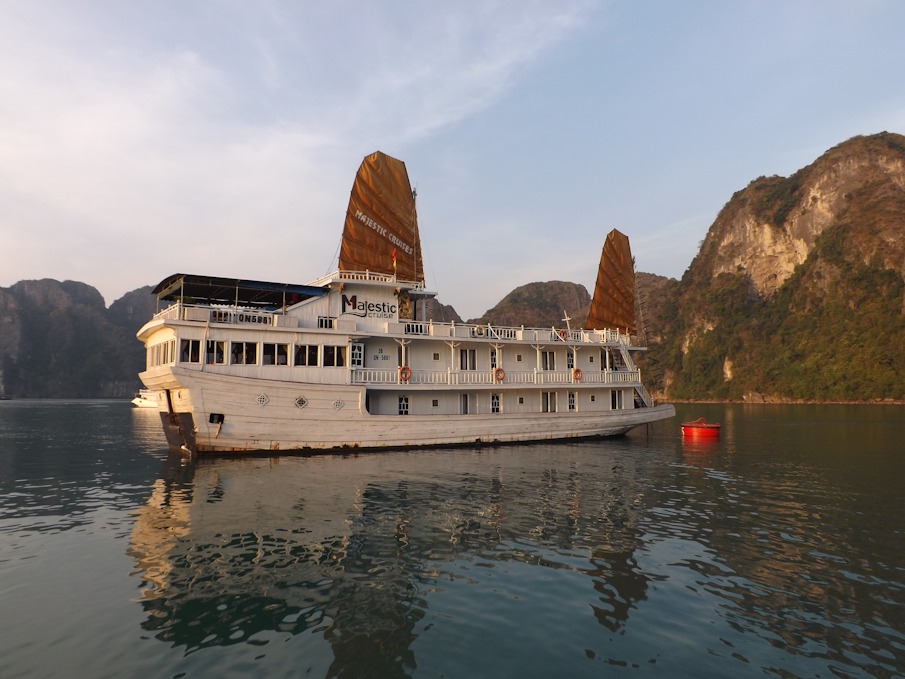
Anyway, the tour bus picked us up at our hostel in Hanoi in the morning for the drive to Ha Long Bay. The bus stopped at a couple of places along the way, neither of which were very interesting. Once we arrived, lunch was served on the junk boat, which was our accommodation for the night. After lunch, a smaller boat took us to a cave, where we disembarked and walked through. After this it was back to the junk boat – the rest of the afternoon/night was spent on the boat relaxing, dinner was served onboard and you could jump off the boat for a swim if you wanted.
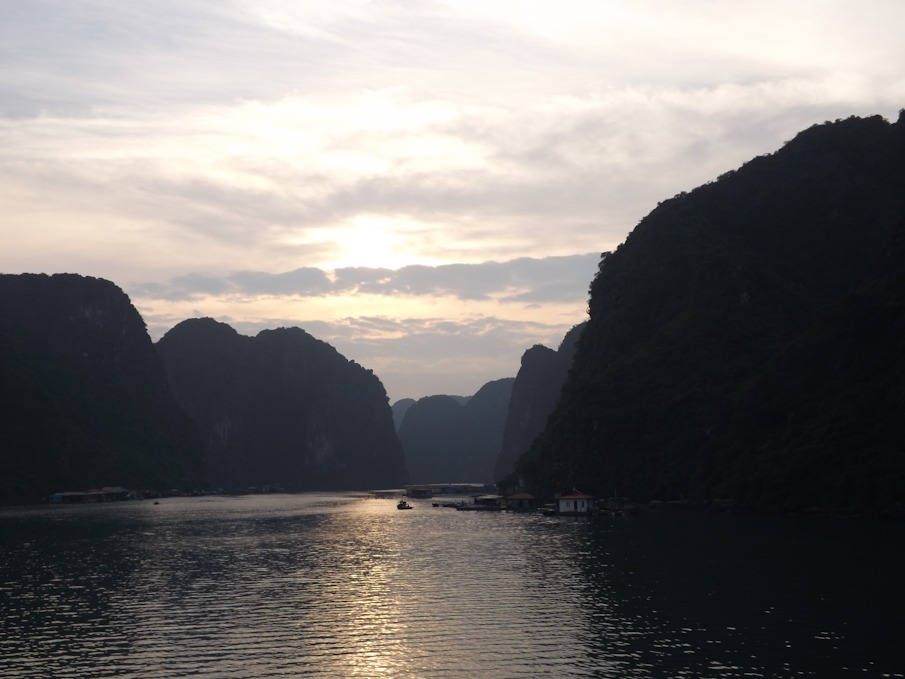
The following morning we were taken to a small floating village, then it was time for some kayaking. This concluded our tour of Ha Long Bay – the boat took us back to the port and directed us to a local bus going to Ninh Binh, our next destination. As I said earlier, it would have been nice in hindsight to book two nights so we could go deeper into Ha Long Bay but we still had an excellent time.

Word of warning, I’d suggest doing some research into tours before booking. Speaking to other backpackers around Vietnam, I’ve heard many different experiences of Ha Long Bay – some good, some bad. We didn’t look into the one we booked through the hostel but it turned out well.
Also, expect to see lots of rubbish floating in the water. Both tourists and local businesses are contributing to this and action needs to be taken. Fortunately, it seems that the problem is getting recognition – a pilot scheme banning plastic on tourist boats was introduced in August 2019 although I suspect greater efforts are needed to preserve the area.
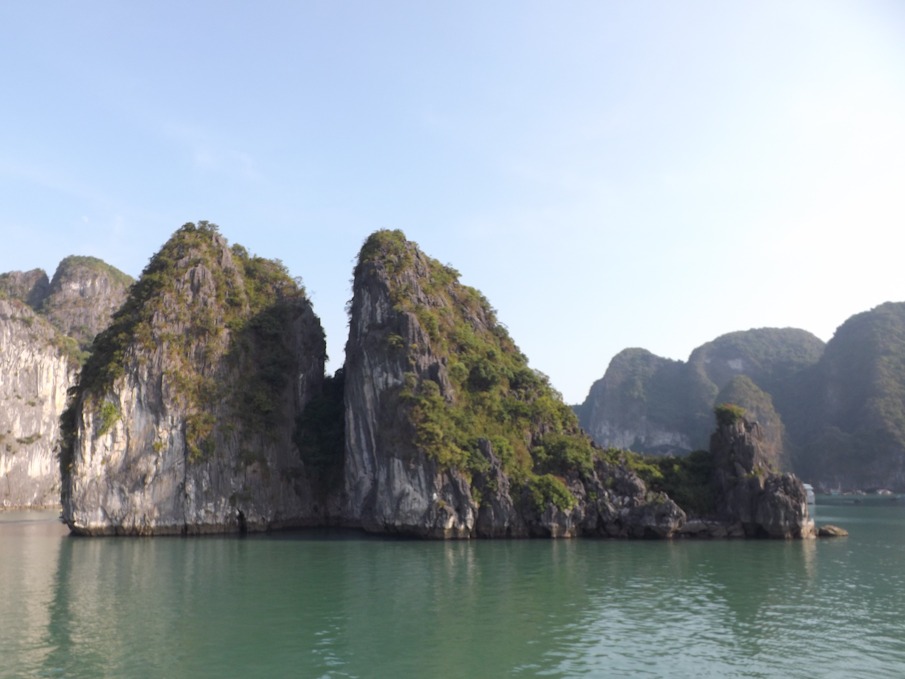
Getting here: From Sapa or Hanoi, book a tour including transport to Ha Long Bay. Alternatively, you can get a bus from Sapa (9 hours) or Hanoi (4 hours) to Ha Long Bai Chay Bus Station, which is a 10km drive away from Ha Long Bay Port.
Ninh Binh/Tam Coc (two nights)
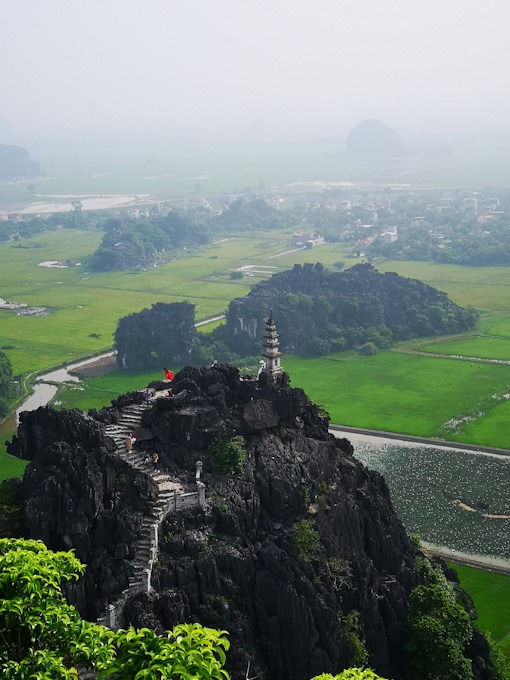
Starting to move south now (but not by much), the town of Ninh Binh itself doesn’t have a great deal to offer, but nearby Tam Coc, which is described as “Ha Long Bay on land”, is surrounded by beautiful countryside and has a number of things to keep you occupied for a couple of days. I’d suggest staying in Tam Coc itself – Ninh Binh’s main use is as a transport hub. The main attractions around Tam Coc are:
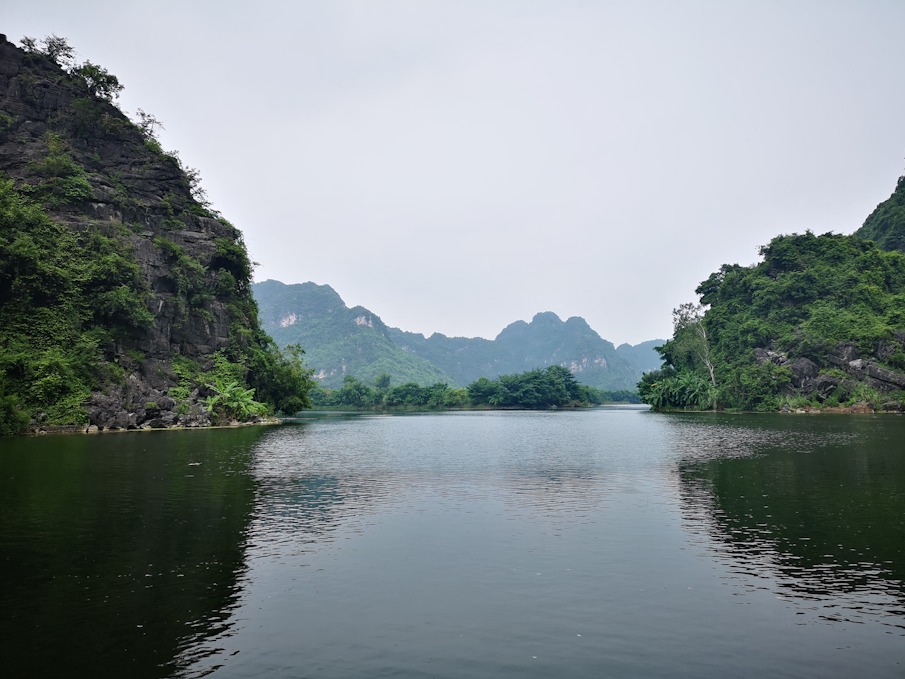
- Taking a boat ride – there are various routes and three possible starting points, namely Tam Coc, Trang An and Linh Coc. I’ve taken a ride from Tam Coc, which is the most easily accessible starting point (it’s right by the majority of accommodation and restaurants in the area). The scenery around the whole area is similar so I can’t imagine there being a huge difference between any of the routes.
- Hiking Hang Mua – slightly confusing as this is usually referred to as Mua Caves, when the main attraction here is a short hike up the mountain. The ‘hike’ is just a walk up some stairs, 496 of them, to be precise. Once you get about halfway up, there are two different routes to choose and I suggest doing both – neither take that long and there are stunning views for both. Again, it gets busy here with day trippers so go early if you want to avoid the crowds from Hanoi.
- Bich Dong Pagoda – the highlight here is the pagoda right at the start of this area, but walking just a minute through here will take you to a temple and there are some stairs you can go up to a viewpoint.
These three places can easily be visited in one day but bear in mind they all get busy. Bich Dong Pagoda doesn’t take long at all so I’d suggest visiting here one morning then going for a boat ride straight after, then doing Hang Mua the next morning. This way you can minimise the crowds at Hang Mua and Bich Dong and not have to queue up too long for a boat ride. There are other, less visited attractions in the area that you can check out in the afternoons.

Also, the locations are a little spread out so you’ll want to rent either a scooter or bicycle, or take taxis (Grab is available) to get around. The distances between the main attractions aren’t huge, but walking between them in the heat would not be pleasant. It’s about 6km between Hang Mua and Bich Dong Pagoda, with the start point for Tam Coc boat rides being roughly in the middle of the two.
Getting here: At Ha Long Bay Port, our tour guide for Ha Long Bay pointed us to a local bus to Ninh Binh, which took 3-4 hours. I have fond memories of the drunk Vietnamese guy who got on this bus and sat next to my brother. I was sitting with my sister-in-law and we watched in hysterics as the drunk guy kept pinching my brother’s nipples for reasons unknown, while trying to talk to him in Vietnamese. Anyway, once you arrive at Ninh Binh, it’s an 8km taxi ride to Tam Coc.
Phong Nha (one night)
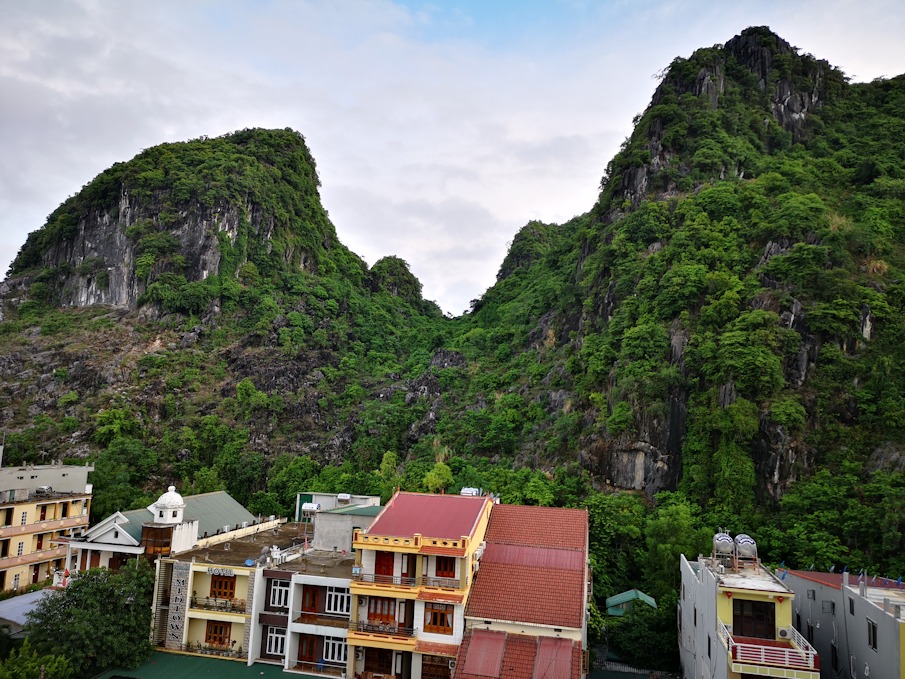
Phong Nha is a small town that has been growing in prominence due to the discovery of several caves, including Sun Doong in 2009, the largest cave in the world. Unless you are prepared to pay $3,000 US for a four day tour, you cannot actually visit Son Doong, but there are a number of smaller caves and other attractions in the town. When I visited, I arranged a tour covering two of the caves through my hostel, Central Backpackers for the next day, along with a sleeper bus ticket for onward travel after the tour (there were a few hours in between the tour ending and the sleeper bus to eat and relax). If you’re interested in a longer stay in Phong Nha, I came across this detailed guide to the area from a Vietnamese blogger.
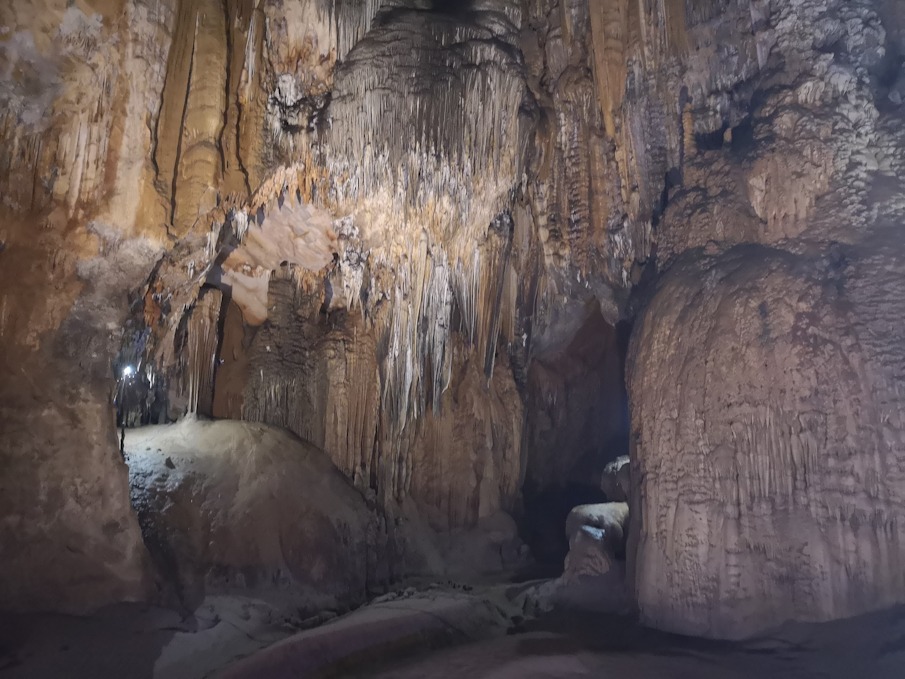
Getting here: There are direct buses from Ninh Binh/Tam Coc to Phong Nha which take about 8 hours. Note that some transport websites will suggest you have to get to Ninh Binh first but this isn’t the case. If you’re staying in Tam Coc, your accommodation or one of the many travel agents in town can arrange a sleeper bus ticket and transport to the bus stop (which seemed to just be a random spot along a main road – there wasn’t anything to indicate an actual bus stop).
Hue (three nights)
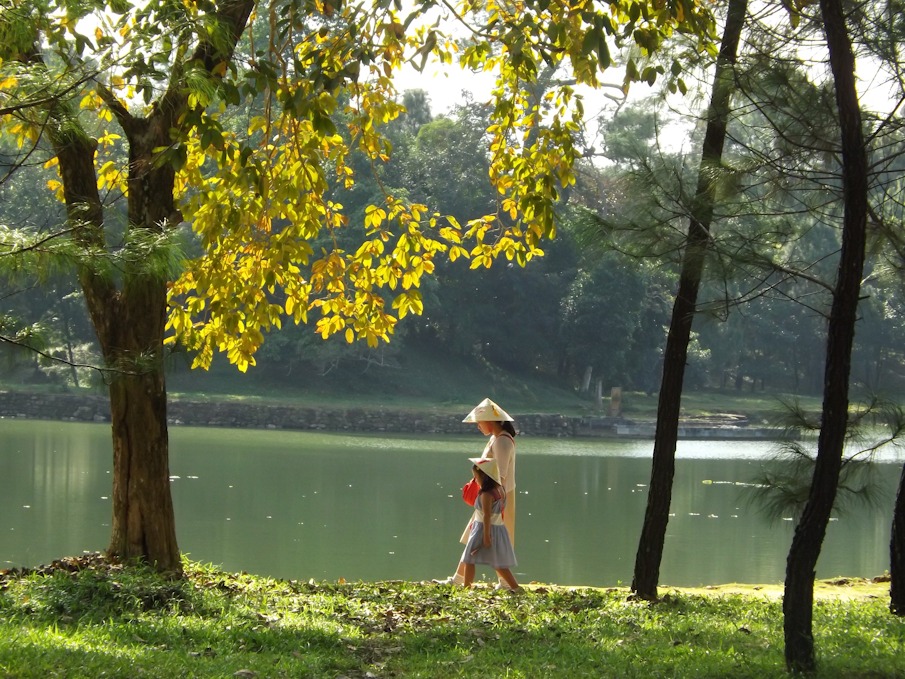
Hue is a former capital of Vietnam and is located near the border which existed between north and south during the Vietnam War. There are many historic sites around Hue and it’s also a good place to arrange a DMZ tour. If you want to visit something less conventional, there is also an abandoned water park which has become more prominent in recent years. I have written a separate post on Hue detailing some of the main things to do and, for my fellow remote workers, places to work from.
Getting here: From Phong Nha, the only direct option by public transport is to come by sleeper bus (approximately 5 hours). There is the option of going by train but, from Phong Nha, you would need to go to Dong Hoi or Minh Le first as there is no train station in Phong Nha.
Da Nang (three nights)
The largest city in central Vietnam, Da Nang has been rapidly growing and, between all the construction work and the city centre not having a huge amount to offer, your first impressions might not be the best.
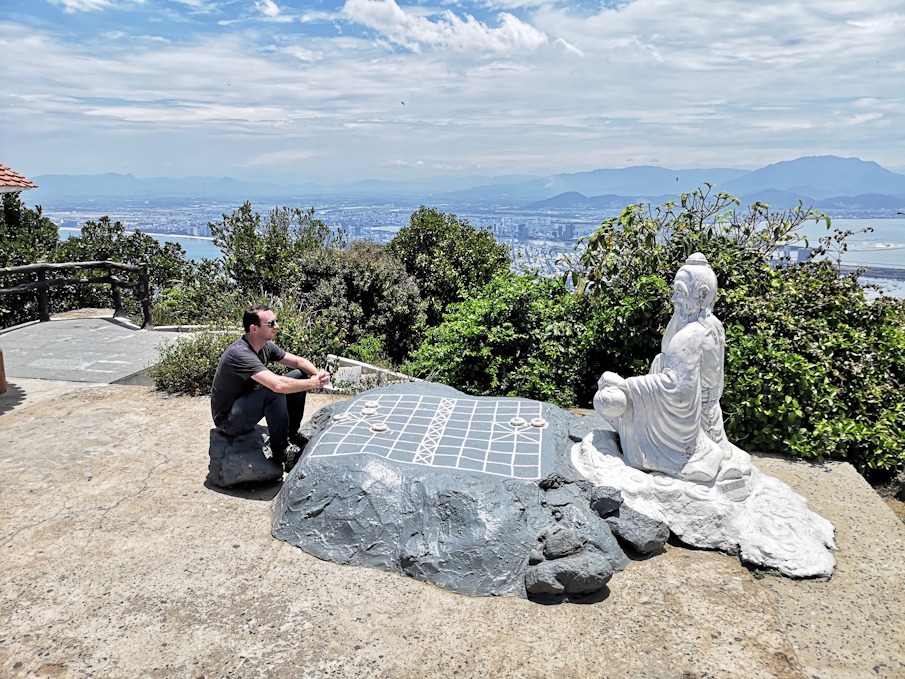
However, there are a number of places worth visiting in or near the city – I have written a separate post on Da Nang detailing things to do and places to work remotely from. The Hai Van Pass and Son Tra Mountain are, in my opinion, the highlights in Da Nang. The Marble Mountains are another highlight and these can easily be visited on the way to Hoi An. Also, if you want to relax at the beach, Da Nang is the first good opportunity to do that on this itinerary (as an alternative, stay longer at Ha Long Bay). The main beach in Da Nang is called My Khe and is located on the east side of the city.
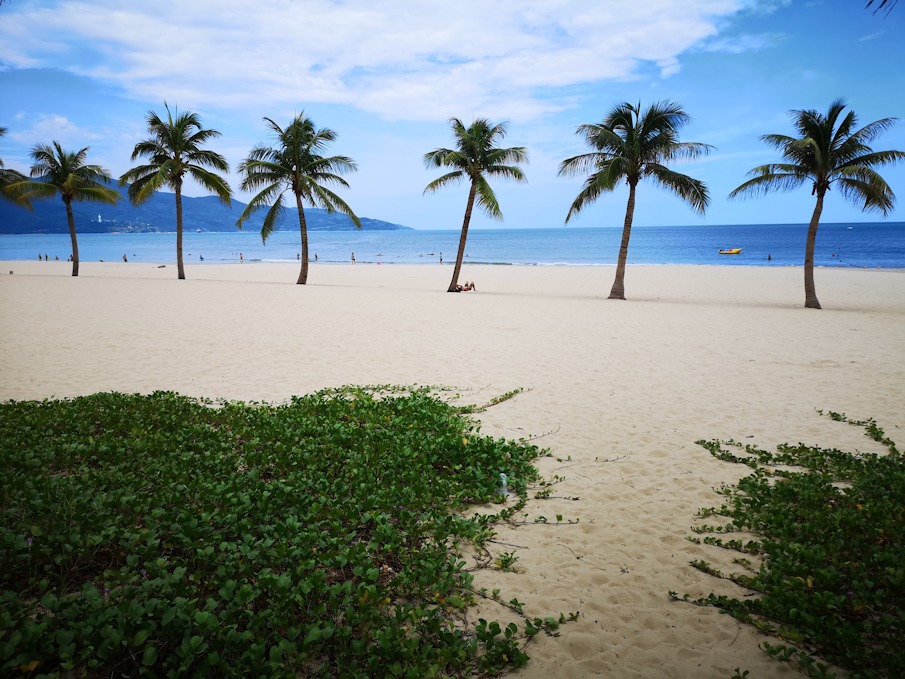
Getting here: From Hue, both trains and sleeper buses are available and the journey takes between 2-3 hours. As an alternative, you can drive a motorbike/book a driver and get from Hue to Da Nang via the stunning Hai Van Pass.
Hoi An (five nights)
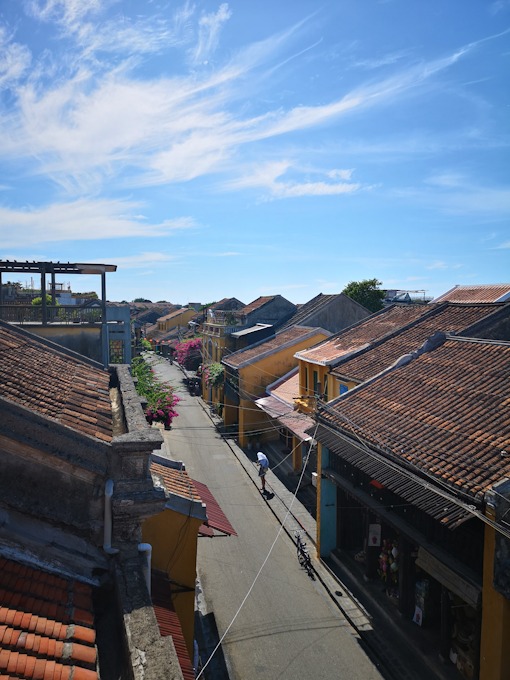
My favourite place in Vietnam and a great spot to relax, the main attraction here is the UNESCO listed old town. You could easily spend less time here or even visit as a day trip from Da Nang, but I feel it’s worth spending a while in Hoi An. Check out my guide to Hoi An, detailing things to do and places to work remotely from.
Getting here: Hoi An is only about an hour’s drive away from Da Nang and there is a public bus (number 1) running between them. However, I recommend arranging a tour or private driver from Da Nang to Hoi An with a stop at the Marble Mountains.
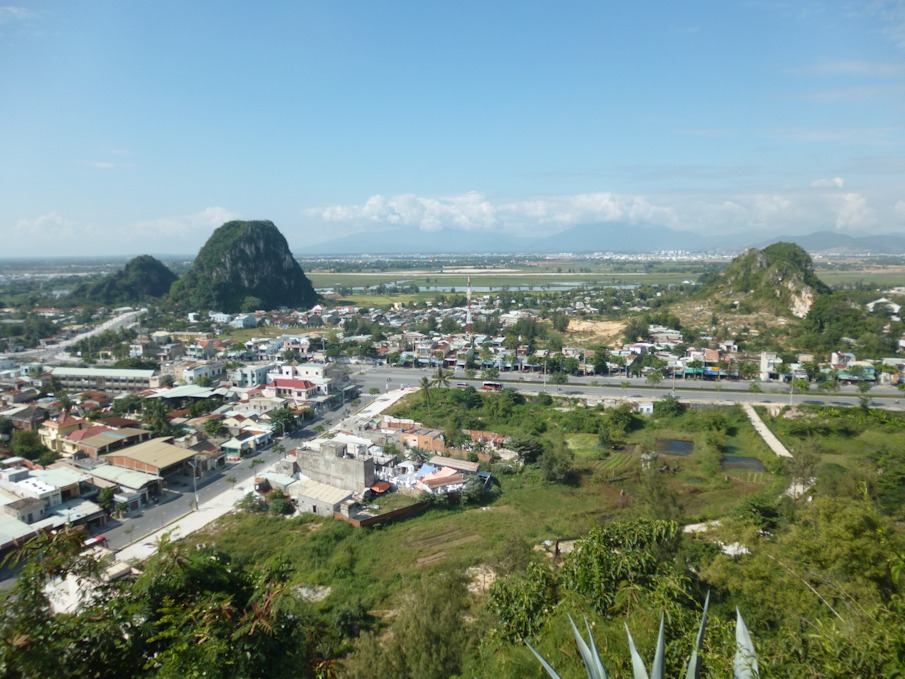
Nha Trang (one night)
Arriving in south Vietnam now, I didn’t think that much of Nha Trang personally and it was mainly just a stop to break up the long journey. The main draw in the city is Tran Phu Beach and I feel that the beaches in Da Nang, Hoi An and Mui Ne are better. Still, I think it’s worth stopping here for one night to avoid a very long journey between Hoi An and Mui Ne.
Getting here: From Hoi An, the only direct option via public transport is to take a ten hour sleeper bus. The only faster alternative is to go to the airport in Da Nang and take a one hour flight to the airport serving Nha Trang, However, when you factor in travel time getting to/from the airports and time spent going through check in etc. I suspect you will only save a few hours and spend a lot more money.
Mui Ne (two nights)
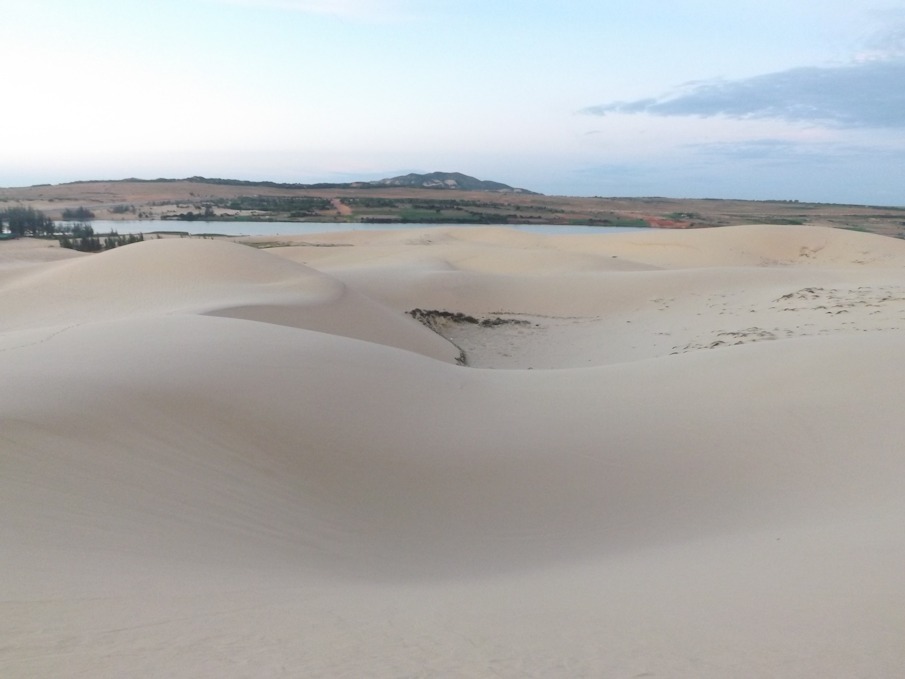
A small and laid back village, Mui Ne is basically just one long road and a beach. The most famous attractions around Mui Ne are:
- White Sand Dunes
- Mui Ne Fishing Village
- The Fairy Stream
- Red Sand Dunes
- Rang Beach
The White Sand Dunes, located 25 kilometres from Mui Ne, is the standout attraction. Most people visit either by driving a scooter or joining a small group tour. We did a sunrise tour, which afterwards took us to Mui Ne Fishing Village then finished by dropping us off at the Fairy Stream, which is within walking distance of the main accommodation areas in Mui Ne.
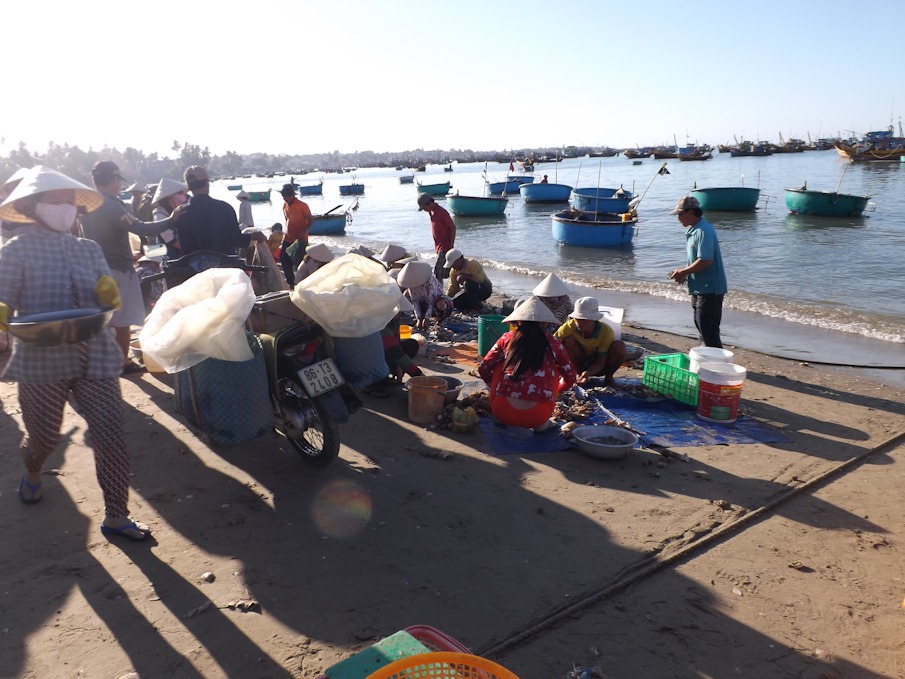
The Red Sand Dunes are much smaller and located just a couple of kilometres from the centre of Mui Ne. We ended up not going there but sunset is meant to be the best time to visit.
Most of the accommodation in Mui Ne is by Rang Beach so this is very easy to access. Despite this, the beach is long enough that you shouldn’t have trouble finding a quiet spot. For a more secluded beach, head to Hom Rom or Suoi Nuoc, which are about 7km and 12km away from the centre of Mui Ne respectively. We didn’t try either of these beaches as Rang Beach was quiet each time we visited.
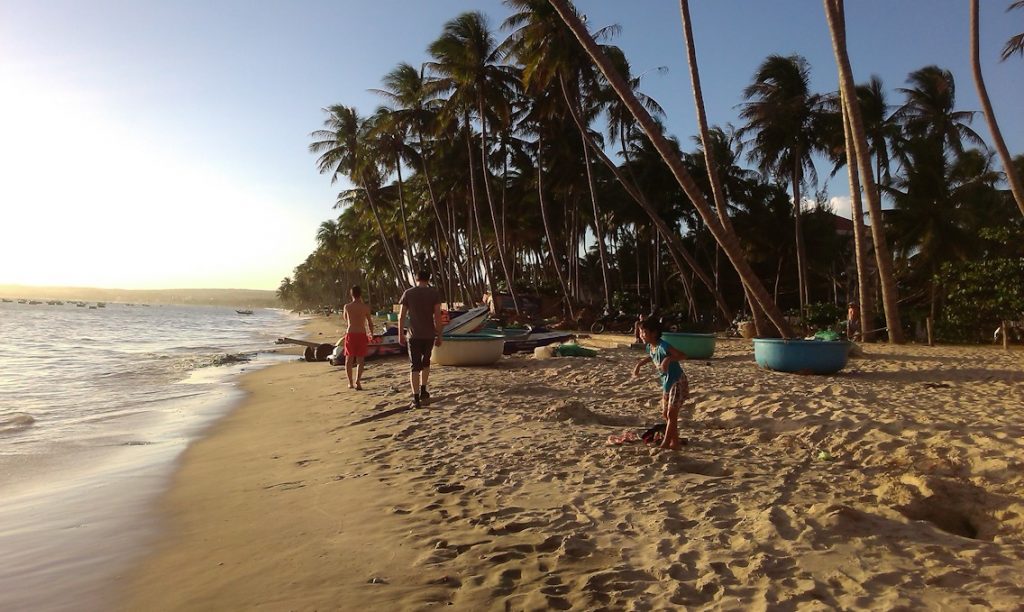
Getting here: From Nha Trang, it takes about five hours to get to Mui Ne by sleeper bus.
Ho Chi Minh City (three nights)
Formerly known as Saigon and often referred to as this or abbreviated to HCMC, this is the largest city in Vietnam. I wasn’t a huge fan of HCMC – traffic is crazy, the place is huge and a hassle to get around and it was extremely hot when we visited. HCMC is a popular location for digital nomads due to its fast Wi-Fi, large number of coworking spaces and low costs, but I personally wouldn’t want to stay here for an extended period of time.
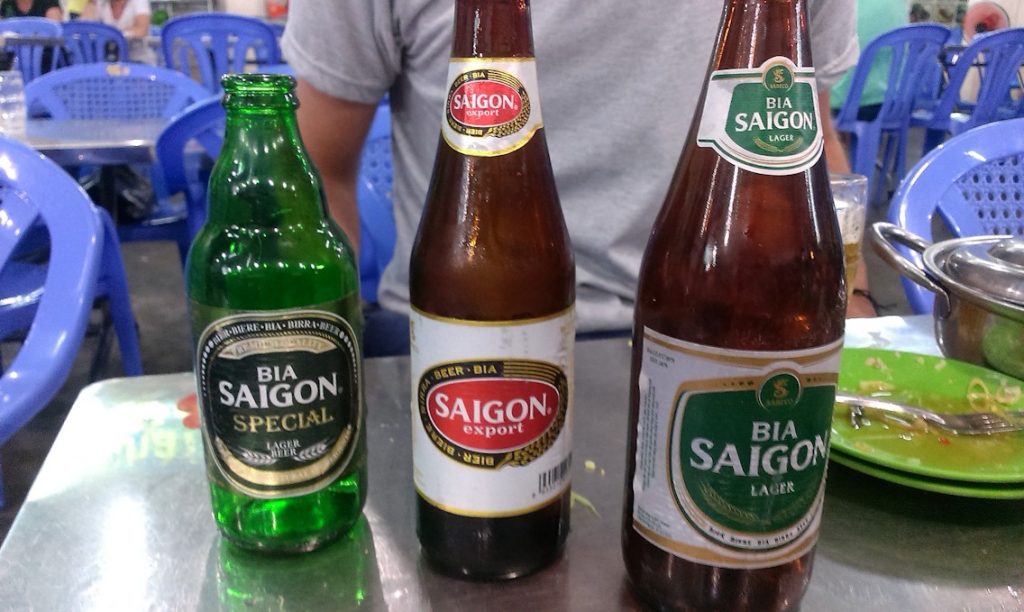
It’s worth noting that a metro system for the city is under construction and Line 1 is due to be in operation by the end of 2021. Once fully developed, the city will be easier to get around and hopefully traffic/pollution will go down.
Some of the main things to do around Saigon are:
- Crawl through the Cu Chi Tunnels – want to squeeze through tunnels used by the Vietcong during the Vietnam War? Easily the most famous tourist spot in HCMC, these tunnels give you the chance to go underground and learn more about the history of the area. There is also the option of firing a variety of guns at the shooting ranges. The easiest way to get here is to book a tour but you can drive there or take public transport.
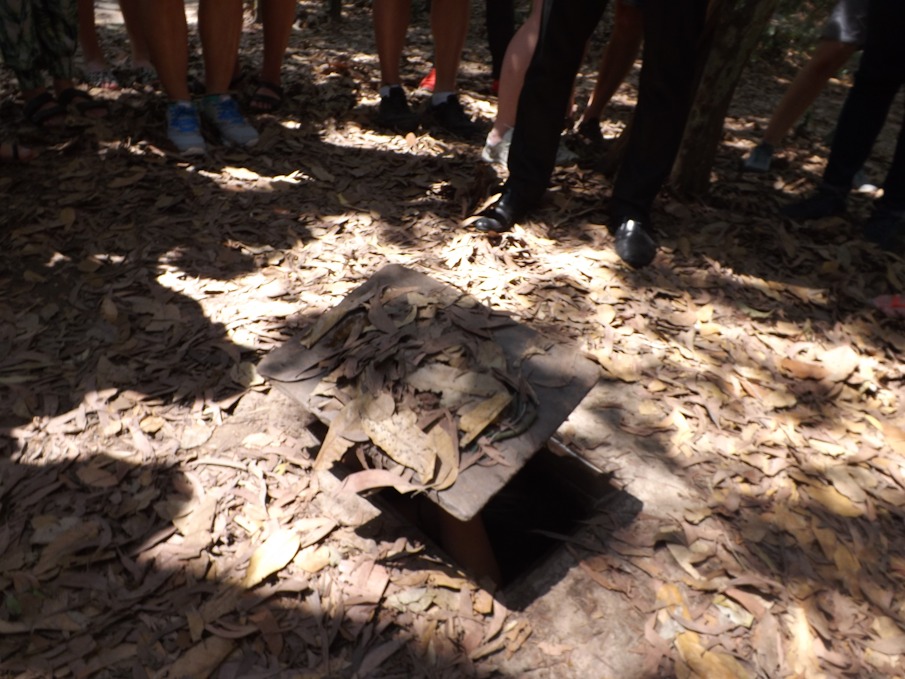
- War Remnants Museum – this museum aims to teach visitors about some of the atrocities of the Vietnam War, albeit not in the most impartial way.
- Explore Reunification Palace – sticking with the Vietnam War theme, this was the home and workplace of the president of South Vietnam during the war. The Vietnam War ended here after it was invaded by North Vietnamese forces.
- Take a motorbike taxi ride – traffic in HCMC is crazier than anywhere else in Vietnam. Want to get into the thick of it but don’t trust yourself to drive safely through the madness? Then take a motorbike taxi – these are common in HCMC, just make sure to wear a helmet and be wary of scams.

- Visit a market – we went to Binh Tay Market, which is situated in the city’s Chinatown and sells a wide variety of foods, clothes, gifts and other items. This is primarily a local market, be ready to haggle if you want to buy anything as high prices will be quoted to foreigners. This place wasn’t very interesting to me, but my sister-in-law enjoyed it.
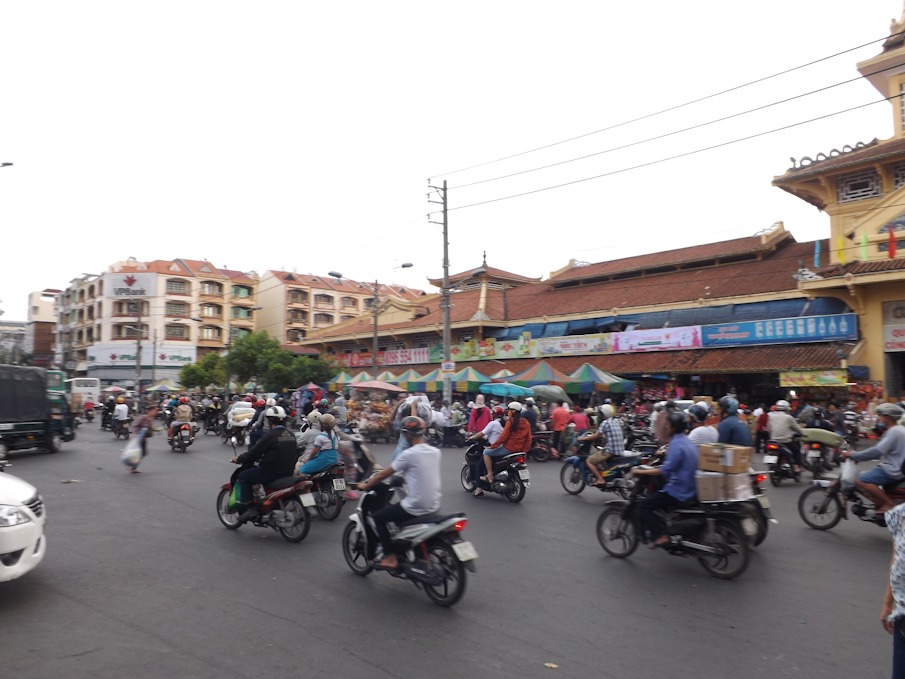
- Have drinks at a sky bar – as the economic and financial hub of Vietnam, it shouldn’t be a surprise that HCMC has a lot of tall buildings with bars on the rooftop. I can’t remember the name of the one we visited but it was a good evening – they had a live band on at the time and the bar overlooked the Saigon River.
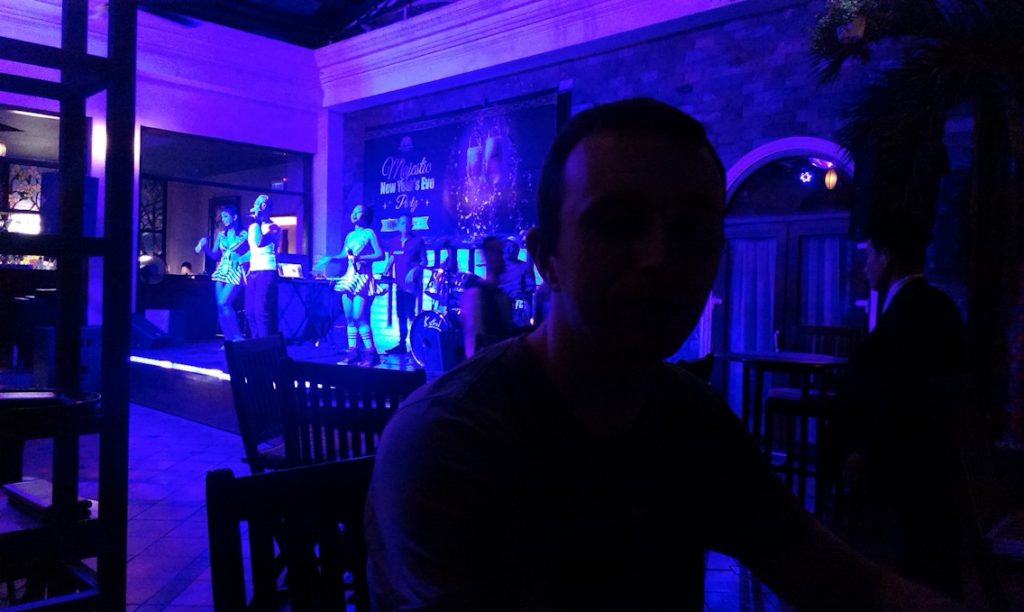
Getting here: From Mui Ne, it takes about five hours to get to HCMC by sleeper bus. As a large city with an international airport and train station, there are many ways to get to HCMC if you are coming from further afield. There is even a 34 hour bus coming all the way from Hanoi – I think I’ll stick to shorter options.
Working Remotely in Vietnam
Unless you go wildly off the beaten path, working remotely while travelling in Vietnam is easy and I haven’t encountered any problems. The popular cities all have a mixture of coworking spaces and coffee shops that are suitable for working on a laptop. When visiting smaller towns surrounded by nature, your options decrease significantly but, speaking from experience around Vietnam and South East Asia, there will usually be at least one coffee shop with decent Wi-Fi in any small town that’s popular with tourists.

To give an overview of my experience working remotely in Vietnam:
Hanoi – As the capital city, it should be no surprise that there are a number of coworking spaces around Hanoi. I used a place called The Learning Hub – the facilities were fine (nothing special) and the small community of members there are very welcoming. The Wi-Fi speed when I ran a test was 20.6 Mbps (download), 12.7 Mbps (upload) and 5ms jitter. A day pass is normally 100,000 VND but your first visit is actually free (at least it was when I went – there isn’t anything about a free trial advertised on their website).
Hue, Da Nang and Hoi An – Check out my linked posts on each for details. Hue is easily the weakest option of the three as a digital nomad, but you shouldn’t have any trouble getting work done while there. Da Nang and Hoi An are both good options – I personally prefer being in Hoi An.
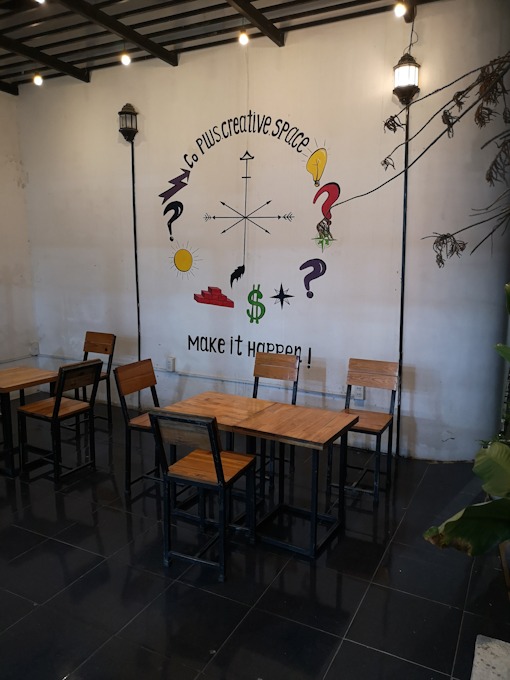
Phong Nha – Despite being a tiny town, I had no trouble working from my hostel, Central Backpackers. Wi-Fi was surprisingly fast on the ground floor at 93 Mbps download and 97.1 Mbps upload speed, with 1ms jitter.
Ho Chi Minh City and Nha Trang – I haven’t tried working in either of these as I only visited on my first trip to Vietnam (before my digital nomad days). However, Ho Chi Minh City has a host of coworking spaces and is a popular digital nomad destination. I have no experience of working there, but the city clearly has many options. As for Nha Trang, a quick Google shows a few coworking spaces, including one near the beach called Toong Gold Coast.
Sapa Town, Tam Coc and Mui Ne – Aside from doing a tiny bit of work from my hostel in Tam Coc, the Banana Tree, I haven’t tried working in any of these places, either because I only visited on my first trip to Vietnam or because I didn’t need to do anything while there. Considering that these are all small towns surrounded by nature, none of them are going to be good options for working remotely. However, they are all popular locations with tourists, which means they all attract investment. I’d be surprised if there isn’t at least one café in each with adequate comfort and Wi-Fi for working on a laptop but I can’t help with specifics.

Ha Long Bay – Forget it and enjoy the place. There was a Wi-Fi network onboard the boat I stayed on but it barely worked for anything.
Is it safe to visit Vietnam?
In normal, non-global pandemic times, Vietnam is relatively safe to visit. The main danger is the Vietnamese traffic, which I have covered in the section below.
Aside from the traffic, the main risk is getting scammed or ripped off. There are so many petty scams aimed at foreigners in Vietnam, that I decided to write a separate post covering some of the common scams and how to avoid them.
Other than these, I’ve never encountered any issues in Vietnam. Violent crime is low – I’m sure it happens, as it does just about everywhere, but I’ve never seen any instances or heard of any from backpackers I’ve met while travelling around the country. Most Vietnamese people are very warm, like my friend below.
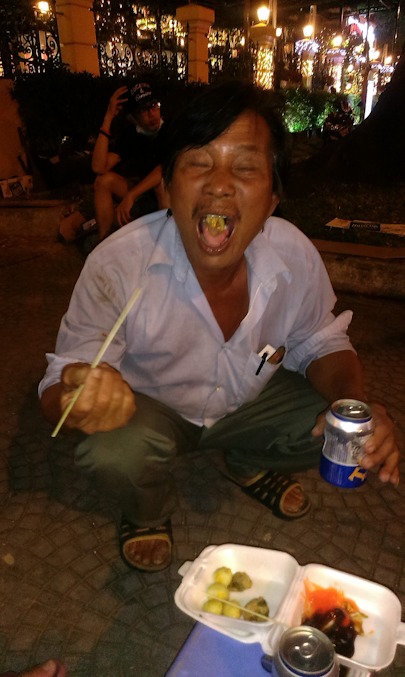
Obviously, no place is 100% safe but as long as you use common sense and get the appropriate vaccinations before visiting, you should be fine.
The Traffic

Traffic in Vietnam is totally nuts and, assuming you start in Hanoi or Ho Chi Minh, your initial experiences of it will be at the height of its craziness. Now, as chaotic and as dangerous as it looks, it isn’t quite as bad as things first appear. What you need to understand is that driving in Vietnam follows a simple concept that’s referred to as the cone of vision, or cone of awareness. This essentially means that the driver only has to worry about what’s in their cone of vision (i.e. what’s in front of him/her) and react accordingly so they don’t hit it. All the madness behind the driver isn’t their problem – they just drive as if everyone outside their cone of vision doesn’t exist. Basically, if you can’t drive into it, it’s not your problem.
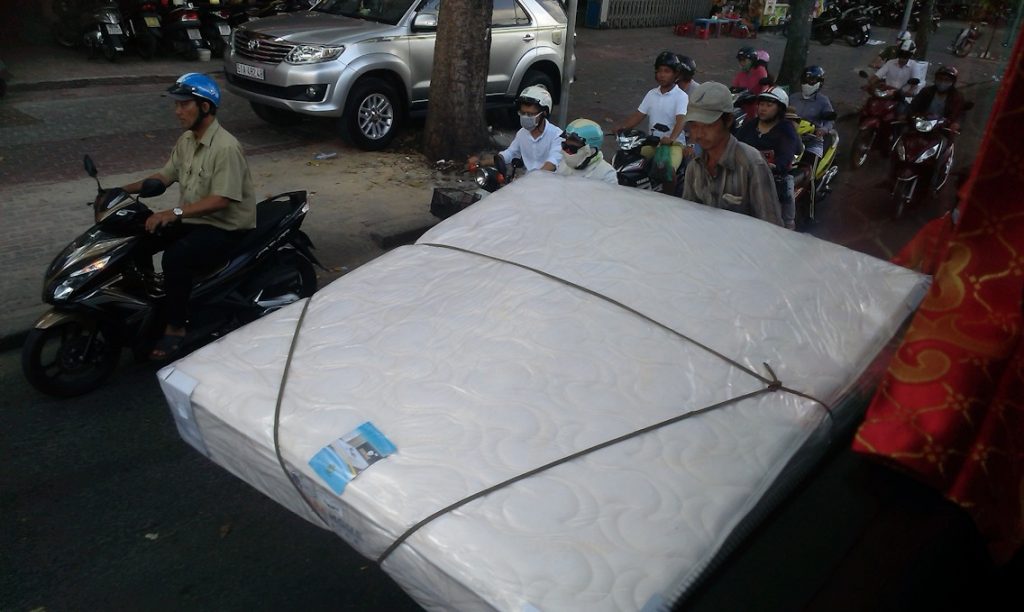
While the traffic isn’t as bad as it initially looks, traffic accidents are common and a leading (non-natural) cause of death in Vietnam so the cone of vision obviously isn’t the most successful system in the world. Take care if you’re going to drive a scooter in the country, especially if you have limited/zero experience.
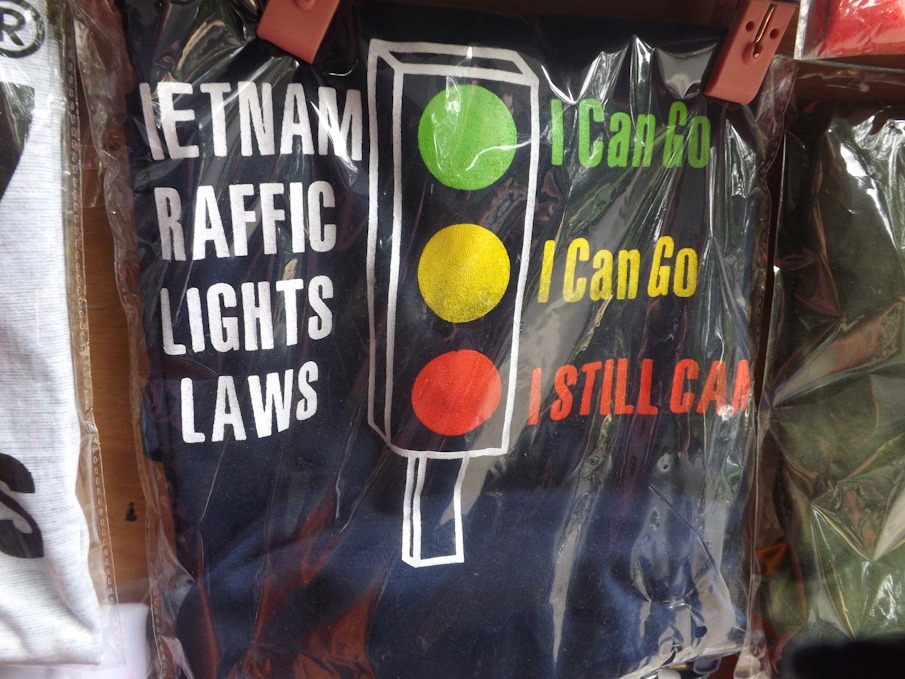
Even as a pedestrian, it can take a couple of days to get used to the traffic (or longer – I don’t think my brother ever adjusted!). To cross the road, you sometimes have to just start walking and trust that all the scooters will drive around you (which they should, as you’re in their cone of vison). The best thing to do when crossing a busy road is to walk straight and at a steady pace. If you get nervous and erratic with your movement, it can cause uncertainty for the drivers.
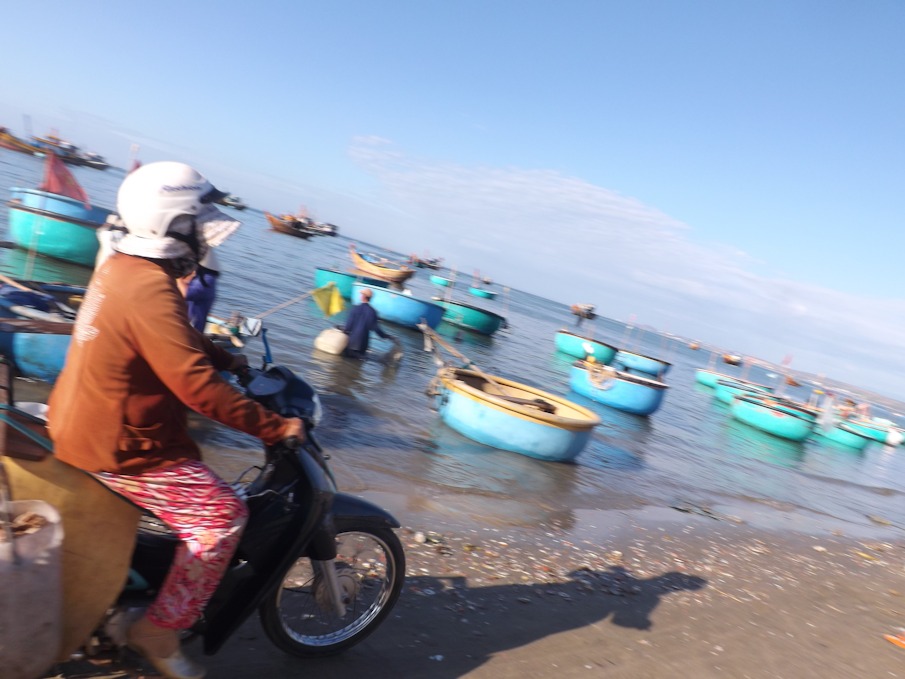
Visas
For the most part, visitors to Vietnam will need to get a visa in advance. A 15 day visa exemption is available to a small number of countries and there are also visa exemptions ranging from 14 to 30 days for citizens of some countries in Asia. The only visa exemption longer than this is for citizens of Chile, who get a whopping 90 days. Note that the 15 day visa exemption has restrictions, the key one being that there has to be a gap of at least 30 days between visa-free visits (i.e. no quick visa runs to a neighbouring country!).
The easiest way to obtain a visa is to apply for a 30 day e-visa, which is available to 81 countries/territories, including the UK, all EU citizens, USA, Canada, Australia and New Zealand. The e-visa system is relatively new – when I first went to Vietnam in 2015 it didn’t exist so I had to go to the Vietnamese embassy in London twice. Fortunately, they implemented an e-visa system in 2017 so the process is now more convenient. I got an e-visa on my last trip to Vietnam and it was processed in three working days as stated on the visa portal. Once received, print a copy of the e-visa before travelling to Vietnam.
Note that the above information was all correct before the coronavirus pandemic. In many cases, the visas I have referred to above have been suspended at the time of writing, although this is only intended to be temporary. Check the latest news and guidelines before considering any travel at the moment.
Costs
Finally, one of the perks of travelling in Vietnam is that it can be extremely cheap.
The price of street food tends to vary between 10,000-50,000 VND depending on the food and location. Of course, eating in upmarket restaurants will cost more but they are still relatively cheap by western standards. For reference, 10,000 VND is £0.33 GBP, $0.43 USD or €0.37 EUR at the time of writing.
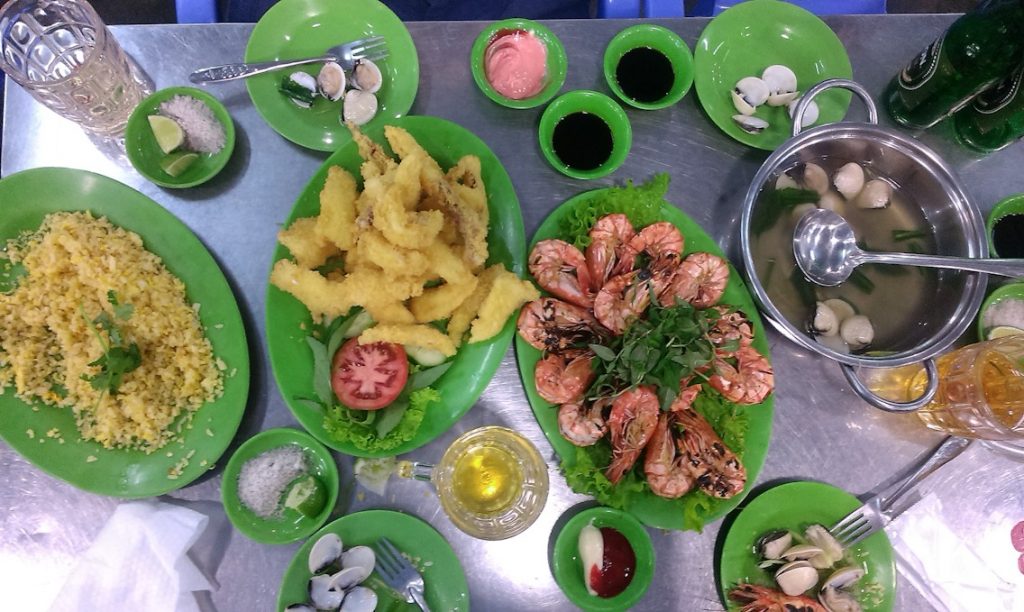
Alcohol, particularly beer, is inexpensive. Bia hoi, which is a locally brewed beer served on tap and unavailable in most bars, typically costs 5,000 VND for a glass. A local bottled beer in a typical backpacker bar should cost between 30,000-50,000 VND.
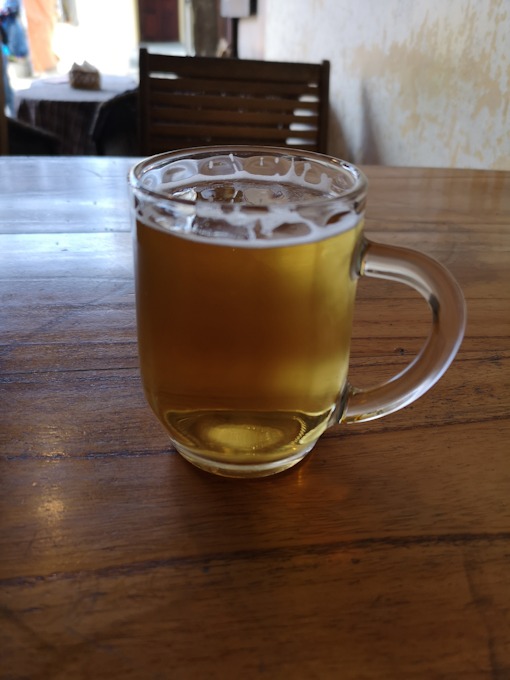
Public transport around the country is also cheap. For example, a sleeper bus with Sinh Tourist from Hanoi to Hue, which covers almost 700km and takes around 11 hours, costs 249,000 VND per their website. Taxis are relatively cheap as well but take care as many taxi drivers will quote a high price – use Grab (similar to Uber) where available.
Of course, accommodation costs vary wildly depending on type and quality. I usually stay in hostel dorm rooms – the average cost of hostel dorms per night during my last trip to Vietnam worked out to £4.56 per night. With one exception, the hostels I stayed in all included breakfast in the price and some included a free drink (or drinks) in the evening as well.
One area where I think Vietnam can be more expensive is the price of tours. I was surprised at some of the prices I was quoted for day trips. They’re not prohibitively expensive but it felt like tour prices had increased significantly since my first visit to the country in 2015. In some cases you’ll be able to haggle the price down.

After almost 6,000 words, I hope this guides help you plan a trip to Vietnam! If you have any questions or recommendations, drop them in the comments.
Leave a Reply